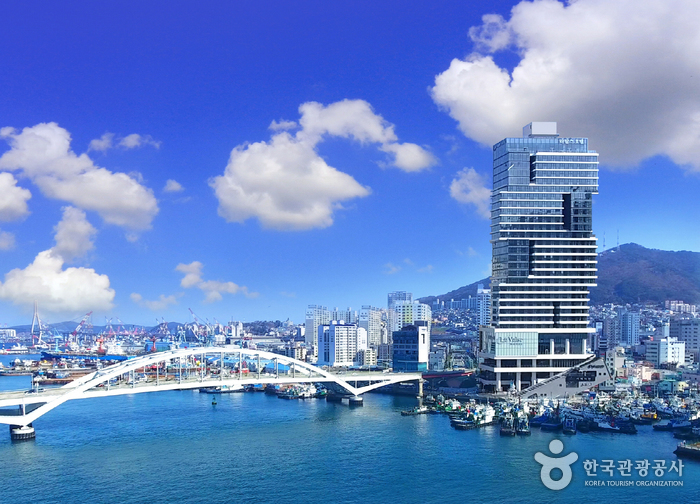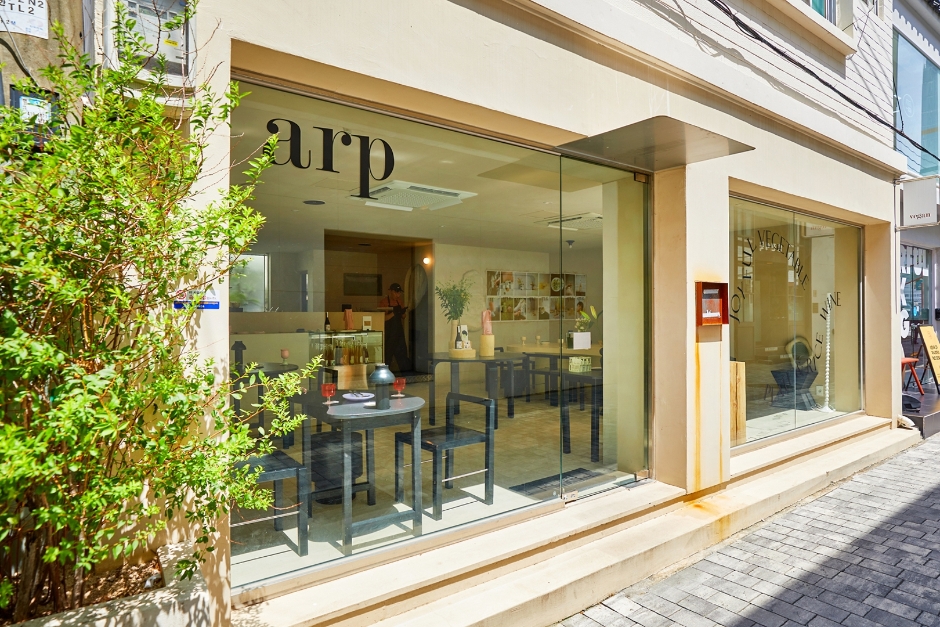CheongKwanJang - Nampo Branch [Tax Refund Shop] (정관장 남포)
18.3Km 2024-04-18
51, Gudeok-ro, Jung-gu, Busan
-
Daiso - Busan Gukje Market Branch [Tax Refund Shop] (다이소 부산국제시장)
18.3Km 2024-04-18
1F, 13, Junggu-ro, Jung-gu, Busan
-
Artbox - Busan Gwangbok Branch [Tax Refund Shop] (아트박스 부산광복)
18.3Km 2024-04-23
28, BIFF gwangjang-ro, Jung-gu, Busan
-
La Valse Hotel Busan (라발스호텔)
18.3Km 2024-12-22
82 , Bongnaenaru-ro, Yeongdo-gu, Busan
+82-51-790-1500
The 29 storey La Valse Hotel in Yeongdo-gu, Busan, offers a variety of rooms, most of which have a fine view of the Sea. The Standard Terrace Ocean Rooms have a terrace as well as a bathtub, and the Corner Double City and Double Ocean Rooms have a window glass wall and an ocean vista. At the 28th floor Sky Cafe and Pub guests can even enjoy their breakfast with a sea view. Nampo Subway Station and Kkanggangi Art Village are 10 minutes away on foot, and Jagalchi Market and the Songdo Marine Cable Car are 10 minutes away by car.
Yeongdo Bongnae Market (Bongnae Market) (영도봉래시장 / 봉래시장)
18.4Km 2023-02-03
39, Taejong-ro 113beon-gil, Yeongdo-gu, Busan
+82-51-413-3111
As a traditional market naturally formed during the Japanese colonial era, Yeongdo Bongnae Market boasted a large scale, but became smaller in size by being partially incorporated with the road after the establishment of Busandaegyo Bridge. The commercial district was further reduced when Namhang Market was formed on the other side. However, food companies such as Samjin Foods and Seongsil Foods, which boast a history and tradition of more than 50 years, maintain their positions within the marketplace and continue to be favored by the local community.
Yeongdo Cheonghak Reservoir Observatory (영도 청학배수지 전망대)
18.4Km 2024-02-13
36 Wachi-ro, Yeongdo-gu, Busan
The observatory boasts stunning vistas of Busan's scenery. It is particularly renowned for the breathtaking night view of the Busan Port Bridge, making it a favorite spot for photography enthusiasts. Surrounding areas are well-equipped with a variety of exercise equipment, enhancing the outdoor experience. Additionally, visitors can explore the History Park, embark on the scenic Namparangil 2-course walking trail, or enjoy a leisurely walk or jog around the tranquil Bongnaesan Mountain.
AREA6 (AREA6)
18.4Km 2023-02-03
37-3, Taejong-ro 105beon-gil, Yeongdo-gu, Busan
+82-1644-1593
AREA6 is a multipurpose cultural space made to promote the artisans and artists of Busan as a part of an urban regeneration project. On the first floor, there are a total of nine spaces, including F&B brands, select shops, and information centers. The second floor is a co-working space and lounge, and the third floor consists of a rooftop and seminar room that anyone can freely use. It was designed sensibly by keeping the existing buildng's shape without compromising volume and scale. Each space, such as a small alley that leads from the yard like a maze, is full of individuality and is fun to look around. Busan's local brands, such as Ineoajimae, Busan Drinks, and Samjin Fish Cake are located here, and a flea market is also held irregularly.
Samjin Fish Cake History Museum · History Hall (삼진어묵체험·역사관)
18.4Km 2023-01-10
36, Taejong-ro 99beon-gil, Yeongdo-gu, Busan
+82-51-412-5468
Fish cakes are one of the most popular snacks in Busan. Among many fish cake makers in the city, Samjin Fish Cake is the oldest fish cake producer. Its main store in Yeongdo looks like a bakery shop. Visitors can choose among a variety of fish cakes and there is a separate space in the store where they can eat purchased fish cakes. The experience hall on the second floor provides a chance for visitors to make their own fish cake.
Hound Hotel Premier Nampo [Korea Quality] (하운드호텔 프리미어 남포 [한국관광 품질인증])
18.4Km 2024-07-01
24 , Bosu-daero, Jung-gu, Busan
+82-51-254-0702
Hound Hotel Premier is a newly built business hotel just 5-minutes’ walk from Jagalchi Station on the Busan Subway. Each room is equipped with high-quality bedding, a sofa, a desk, and a spacious bathtub; some rooms also have an outdoor terrace. There is an elevator and accessible rooms for disabled customers. Cribs can be provided for young children. There is a meeting room which can be hired, and a rooftop with fine views over the city. A concierge, luggage storage and foreign language service is available. The hotel is well positioned for restaurants, sight-seeing and shopping: Jagalchi Market and Bupyeong Kkangtong Market are both nearby.
Arp (아르프)
18.4Km 2024-01-05
35 Taejong-ro 99beon-gil, Yeongdo-gu, Busan
Located across from Samjin Food in Bongnae Market in Yeongdo-gu, Arp is a vegan restaurant famous as a place to take Instagrammable photos due to its streamlined and stylish interior. The recommended menu is Gosari Pasta, which has a delicious pesto made from brackens from Jirisan Mountain. The Arp Vegan Black Burger is filled with a plant-based patty, vegan cheddar cheese, lettuce, and tomato in a light and savory bun, making it a filling meal even for vegetarians. The signature menu here is rice liquor. The liquor is made using green tea leaves from Bongnaesan Mountain in Yeongdo, sticky rice, and malt, and is a perfect match with any menu. A variety of rice liquors are available, each crafted to offer a different experience for the taste buds by making slight changes using ingredients, fermentation, and seasonal characteristics. For example, Sunshine of You has a refreshing tart taste, while Lette uses lime to give a taste that suits the summer season.

![Daiso - Busan Gukje Market Branch [Tax Refund Shop] (다이소 부산국제시장)](http://tong.visitkorea.or.kr/cms/resource/15/2889115_image2_1.jpg)
![Artbox - Busan Gwangbok Branch [Tax Refund Shop] (아트박스 부산광복)](http://tong.visitkorea.or.kr/cms/resource/70/2885870_image2_1.jpg)

![Hound Hotel Premier Nampo [Korea Quality] (하운드호텔 프리미어 남포 [한국관광 품질인증])](http://tong.visitkorea.or.kr/cms/resource/67/2651267_image2_1.jpg)

 English
English
 한국어
한국어 日本語
日本語 中文(简体)
中文(简体) Deutsch
Deutsch Français
Français Español
Español Русский
Русский